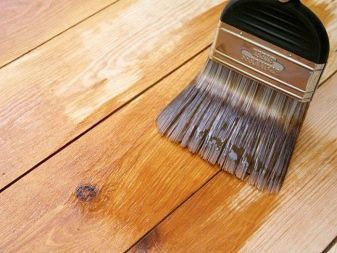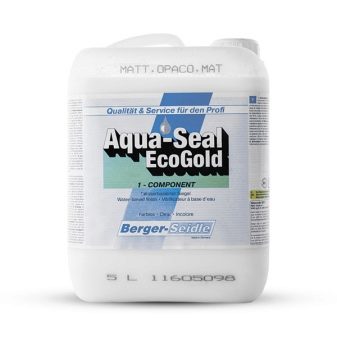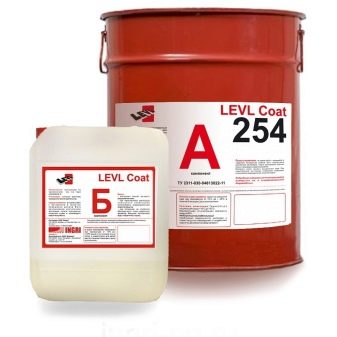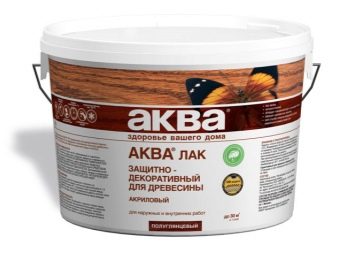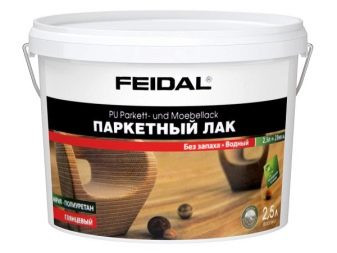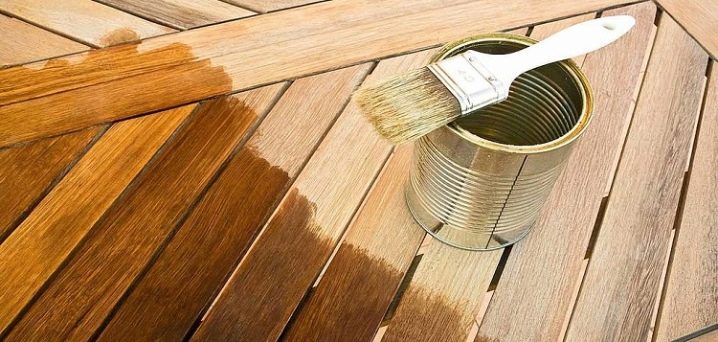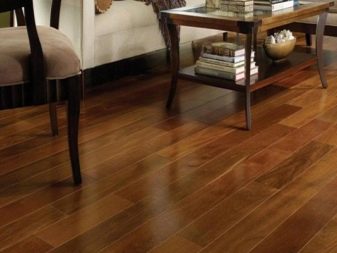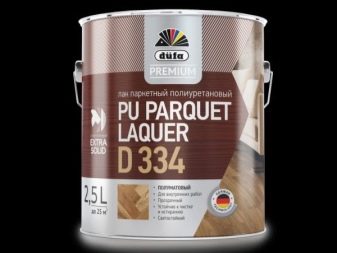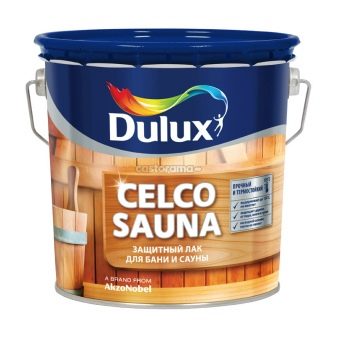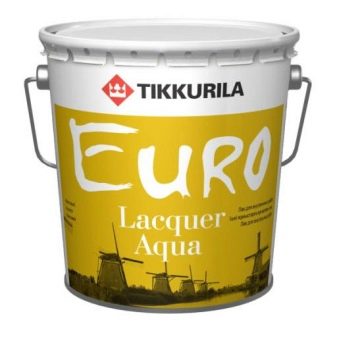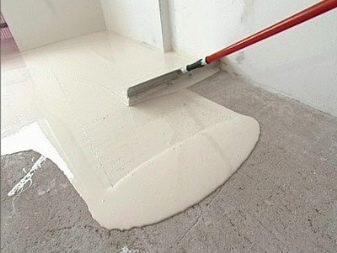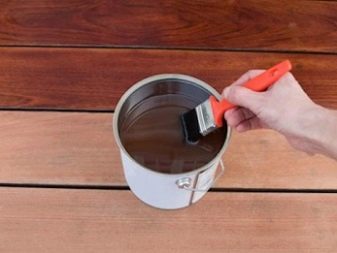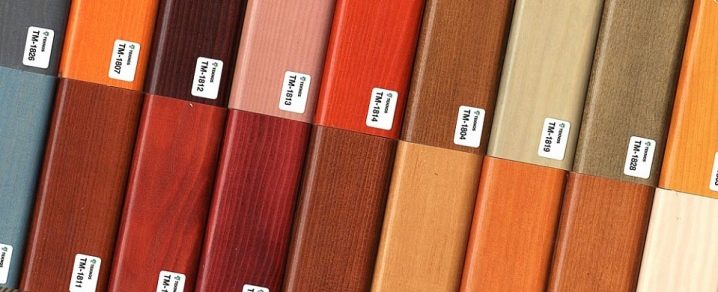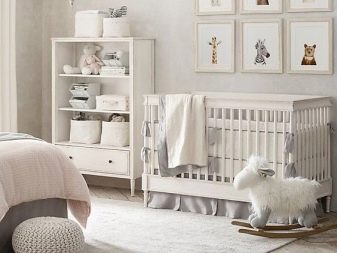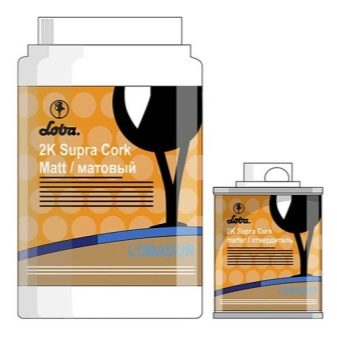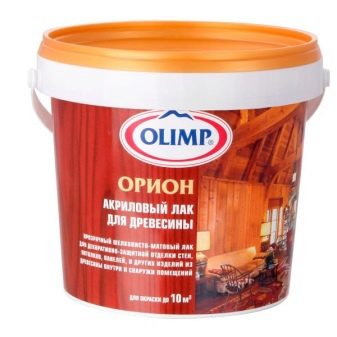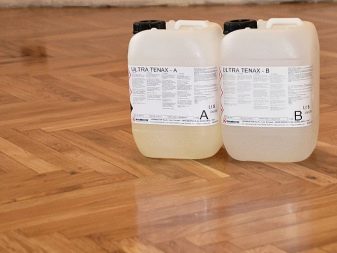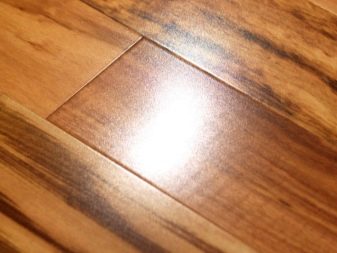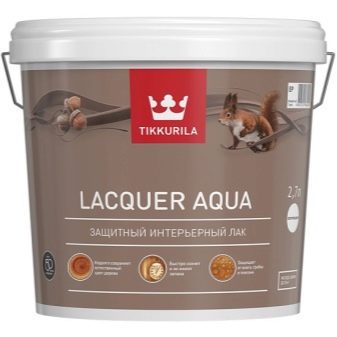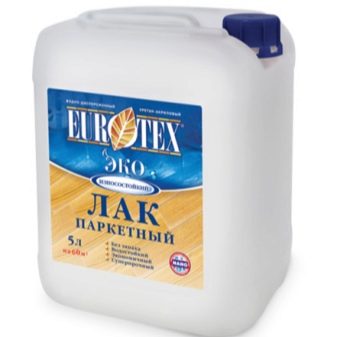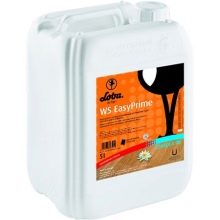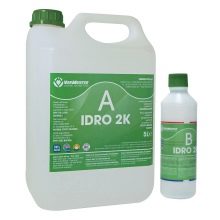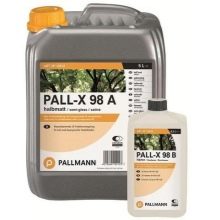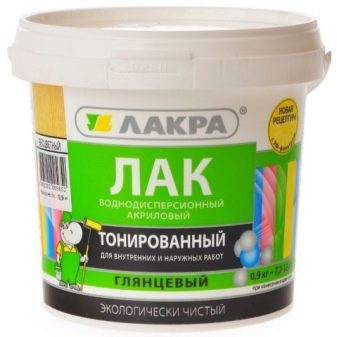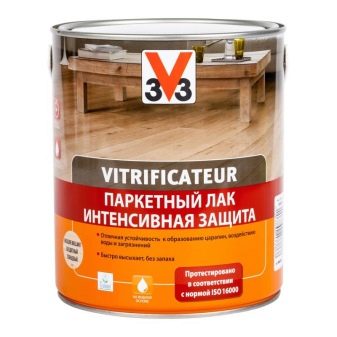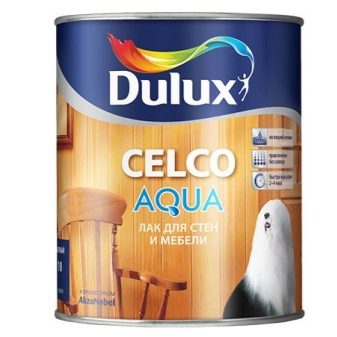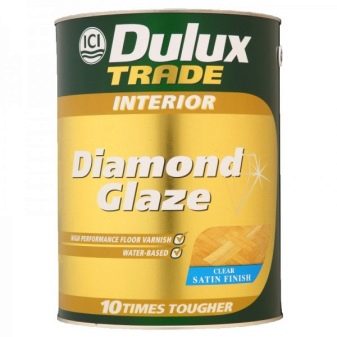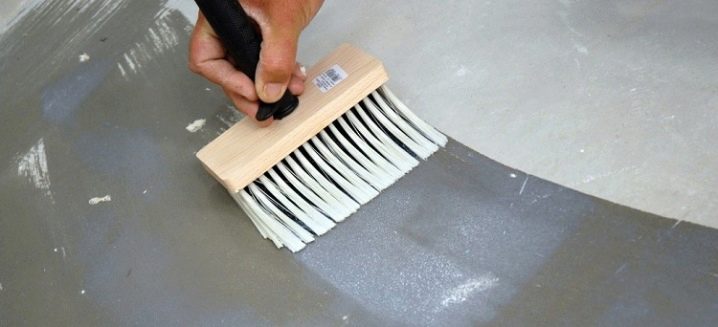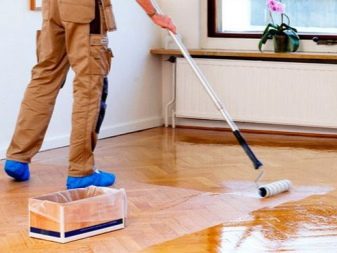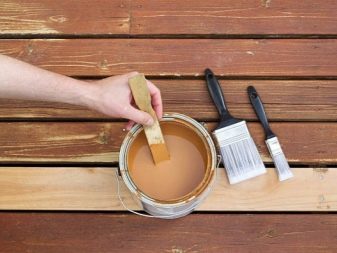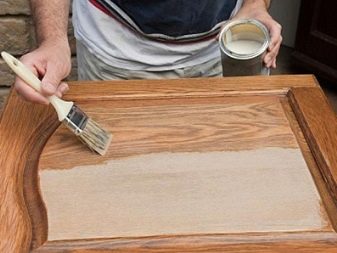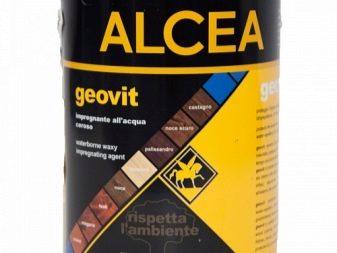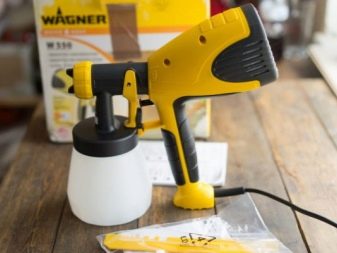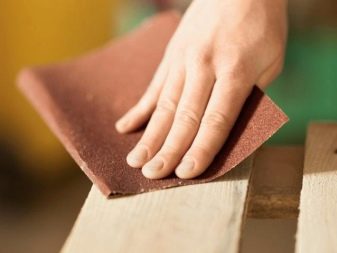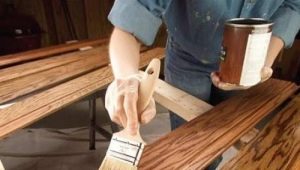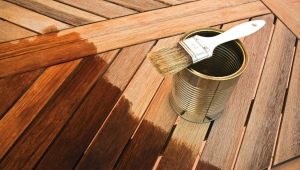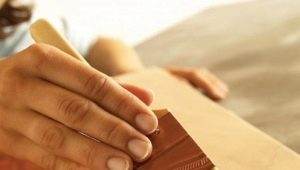Water-based lacquers: the pros and cons
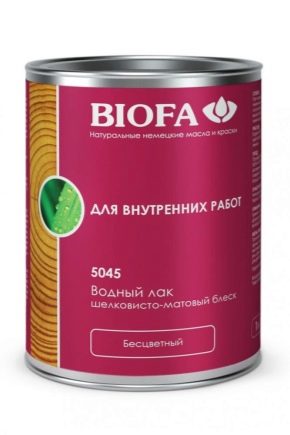
The water-based lacquer which has appeared relatively recently is becoming more and more popular. This is due to the environmental friendliness of the composition, the absence of an unpleasant smell when applied and decent technical characteristics.
Special features
Water-based lacquer is a type of paint product that is primarily environmentally friendly. It contains water and emulsifiers (acrylic or polyurethane). In addition, the composition may contain liquid polymers, antiseptics (as part of woodworking varnishes), solvents (their proportion may be 5–15%), plasticizers (provide increased strength of the varnish layer). The presence of water due to the peculiarity of "setting" varnish. First of all, it is the one that evaporates, then the film-forming component (solvent) and, last of all, the binder component (emulsifier).
All water-based lacquers are divided into two large groups - one-component and two-component. One-component compositions, as the name implies, consist of one active ingredient - acrylic or polyurethane.
- Acrylic The compositions are considered more environmentally friendly, they do not create on the surface of the film, so the bases can "breathe". In addition, acrylic paints are more resilient, which means that they are easier to apply. However, these compositions do not show as high strength indicators as polyurethane analogues. The optimum application of the product is residential premises with standard environmental conditions.
- Polyurethane varnishes, characterized by a large margin of safety, are used for surfaces in public and administrative buildings. They are suitable for substrates subject to high mechanical loads and prone to damage.
The basis of a two-component lacquer is acrylic, in which polyurethane is added to improve performance. An important feature of water-based lacquers is their freezing at negative air temperatures. After defrosting, this product is not suitable for use.
To avoid damage to the composition allows compliance with the rules of storage. Water-based varnishes can only be stored at a positive temperature.
Specifications
Speaking about the technical characteristics, it is logical to note the advantages of water-based varnishes.
- Environmental friendliness, due to the absence or minimum content in the composition of solvents and other aggressive chemical elements. This causes the absence of an unpleasant odor in the process of dyeing and drying of water-based lacquer. Neither alkyd nor oil, nor even more formaldehyde composition can demonstrate similar properties.
- High fire safety - the material is completely non-flammable, which makes it possible to apply it on surfaces that are subject to increased fire safety requirements.
- High drying speed - 3-5 hours after application. However, it should not be forgotten that the layer will gain the final strength in 15–30 days.
- Good performance adhesion, but subject to compliance with the technology of training workers grounds.
- Antiseptic ability is characteristic of acrylic lacquers.
- Persistence to temperature changes, increased humidity levels.
- Persistence to the influence of ultraviolet raysthat provides reliable protection of surfaces from sunlight, preservation of their color.
- Opportunity further use working tools - it is enough to wash them with soap or dish detergent, rinse and dry.
- It is important that no unpleasant smell, as well as a high drying rate allow you to work without changing the usual way of life of the household. No need to think about where to relocate for the period of repair of children and elderly relatives.
As with any type of lacquer, the composition under consideration has disadvantages, namely:
- lower strength to mechanical stress compared with other types of varnishes;
- the possibility of applying only at a temperature of + 15–20 ºС and air humidity of 50–55%;
- high cost compared to other types of varnish.
Dispersion varnish with the addition of polyurethane has high moisture resistance, as well as resistance to household chemicals, including alcohol. The interior composition usually has an acrylic base, and for application to the floor - polyurethane, characterized by increased strength.There are also varieties of the product, designed for different types of foundations (wood, concrete, plasterboard and others).
We should also highlight the self-priming composition, water-based, used for finishing. One of its main advantages is the ability to spread evenly, forming a flat surface. The use of the composition can significantly improve the appearance of varnished surfaces.
There are such varieties of self-priming composition, as:
- glossy - allows you to get elegant shiny surfaces, emphasizes the richness of bright shades. Not suitable for use on surfaces with defects, as it makes them even more visible;
- matt - derived from alkyd-urethane composition. It does not have a characteristic luster, it looks elegant, noble, and also emphasizes the depth of color, visually hides the flaws of the base.
In addition, there are "intermediate" options - semi-gloss and semi-gloss. The latter reveals a greater degree of gloss, but still does not “reach out” to the pronounced glossy coatings.Water-based varnish is a colorless transparent composition, and if we are talking about an acrylic version - a milky white shade. However, by adding color to them, you can get any shade. Transparent varnish does not change the shade and structure of the surface, but only emphasizes them.
Scope of application
The bulk of water-based products are intended for interior use, their use for exterior decoration is not recommended. The tool has a fairly wide scope. It increases moisture resistance and other operational characteristics of walls, furniture, interior elements. However, water-based acrylic compositions cannot withstand increased static and dynamic loads, so they are unsuitable for application over flooring with high permeability. It is permissible to use them in the bedroom and nursery, for example, but not in the living room and corridor. For these rooms it is better to choose analogues with a polyurethane binding component.
It should be noted that acrylic varnishes and paints are usually used for home decoration, while more durable polyurethane paints are used for surface treatment in publicbuildings.
Two-component formulations are most often used for coating wooden flooring. In addition, they can be applied to metal, concrete, stone, drywall. Similar formulations are used when performing the following types of work:
- foundation reinforcement - in this case, they act as a kind of adhesive solution, fastening the exfoliating elements;
- antiseptic treatment - prevents the appearance of mold and fungus on the treated surface;
- surface protection - treated bases acquire greater strength, including temperature differences, mechanical damage, high humidity;
- maintaining the saturation of the surface color - the formed film protects the bases from burning under the influence of UV rays;
- surface decoration - depending on the type, such a lacquer can be used as a toning composition, to give haze or glossy shine;
- simplifying the process of caring for surfaces - it is possible to wipe the protected bases without fear with a damp rag.
Manufacturers: review and reviews
Among the leading manufacturers of water-based paints is a Finnish company. Tikkurila. The range is represented mainly by acrylic lacquers, there are both universal formulations and products for walls, floors, furniture. Buyers note a complete lack of smell when working with the product. And also from the experience of some users it can be concluded that the composition is better to use in rooms facing the non-solar side.
Varnishes manufactured under the brand name Eurotex, allow not only to protect the surface and add gloss to them, but also to create an imitation of valuable and expensive tree species (when applying the composition on wood, of course).
Brand leaders are also considered leaders. LOBA. This German manufacturer regularly expands the range of varnishes, as well as colors for them. The price range is also wide. A large assortment, as a rule, is demonstrated by such reputable European brands as Vermeister, Pallmann, Berger-Seidle. In addition to special varnishes for different types of surfaces, as well as wooden furniture, walls and floors, there are modifications for baths and saunas. The latter are characterized by high heat resistance and moisture resistance.
A positive assessment of buyers has products of domestic producers. Lacra. High quality, no smell (a small specific “flavor” is possible when using polyurethane lacquers), lower cost compared to the price of imported analogues - all of these are undoubted advantages of the products. The range is represented mainly by compositions for the finishing coating. A variety of products can boast of the company's products V33, because it includes options for floors, walls, furniture, as well as universal varnishes. Means strike with variety of flowers as wenge, thin oak, pine and others.
If you need to varnish or decorate the furniture, it is recommended to use varnishes 3V3 from the French manufacturer. Due to their characteristic consistency, they are easier to apply on curved surfaces and to use in hard-to-reach places.
Increased wear resistance and durability is characterized by varnish Deluxe. In addition, the tool allows the grounds to give a noble look, imitation of precious wood. According to reviews, this composition, applied in the corridor, does not require updating for about 3 years. At the same time, the flawless appearance of the floor is maintained even in conditions of high permeability and regular wet cleaning.
The range of this manufacturer has another composition for the treatment of floorboard - Dulux Trade Diamond Glaze. Due to the peculiarities of the composition and production, this varnish provides 10 times more durability than other water-based varnishes.
Tips
Experts recommend sticking to a few tips when using water-based varnishes.
- To obtain a perfect result, as well as preserve the performance characteristics of varnish it is important to prepare workers They should be smooth, clean (without fat stains and traces of the previous coating), dry.
- Primer is applied first. You can not skip this stage of work, apply a primer in 2-3 layers, which will reduce the consumption of varnish, to increase the strength of its layer.
- It is recommended to use special primers, intended for the surface to be trimmed, for example, for wooden surfaces, wood primer should be used. It is important to choose a compatible primer and coating compositions. They both should be water based.
- Water-based varnishes are not applied with brushes. For these purposes, only the roller is used, on large grounds, you can use the spray gun. The use of a brush threatens the appearance of noticeable stripes on the lacquered surface, therefore, even in the corners and other hard-to-reach areas, rollers of appropriate sizes are used.
- Before applying each subsequent layer, you must wait complete drying of the previous. Otherwise, do not avoid irregularities and surface roughness. If this recommendation is followed, but the dried layer of lacquer is rough, then this is due to the sedimentation of dust on the lacquer. This problem can be solved by grinding the surface with a defect.
- Acrylic and polyurethane varnishes must be used before use. mix thoroughly or shake within 2–8 minutes depending on the volume of the container with varnish.
In the process of use, the composition is also periodically changed every 30–60 minutes.
- Water based lacquering is permissible only at temperatures not lower than + 12ºС and not higher than + 30ºС. Experts consider the optimum range to be + 20-23ºС. Failure to comply with this requirement is a high probability of reducing the adhesive properties of the product.The change in temperature during the drying process of varnish usually leads to an increase in drying time and curing.
- When painting furniture it is recommended Disassemble if possible. This will allow to achieve a better application of varnish.
- If, after mixing, the composition appears to be too thick and inconvenient to apply, it is permissible to add water to it, but not more than 10–15% of the total.
- If necessary, toned or refreshed surface. can use color. It must be thoroughly mixed with varnish, otherwise it is impossible to avoid more and less bright colored stripes when painting.
- It is possible to tint a water varnish only by impregnation on a similar basis. First, the test portion of the lacquer is prepared - a dye is added to a small amount of it. After mixing, if it suits the composition, it is checked on a separate surface area.
- Zakolerovat grounds can be using spray gun or foam swab. This will allow for a more uniform layer. At different thickness of the applied layers, the shades on a thicker area will be darker.Experts recommend painting the surface in 2-3 layers, causing them to be as thin as possible.
- Varnishing plastered walls, previously It is recommended to wax them. This will reduce the consumption of varnish and will allow you to get a noble shimmering surface that changes its appearance depending on the angle of illumination.
- Before applying a finishing coat of paint walk on the surface of sandpaper, and then dust it. This will avoid the formation of bubbles on the last layer.
- During operation, as in the drying period, should close the windows. This will avoid the accumulation of dust on a sticky surface.
In the next video you will find a comparative test of water-based varnishes.
